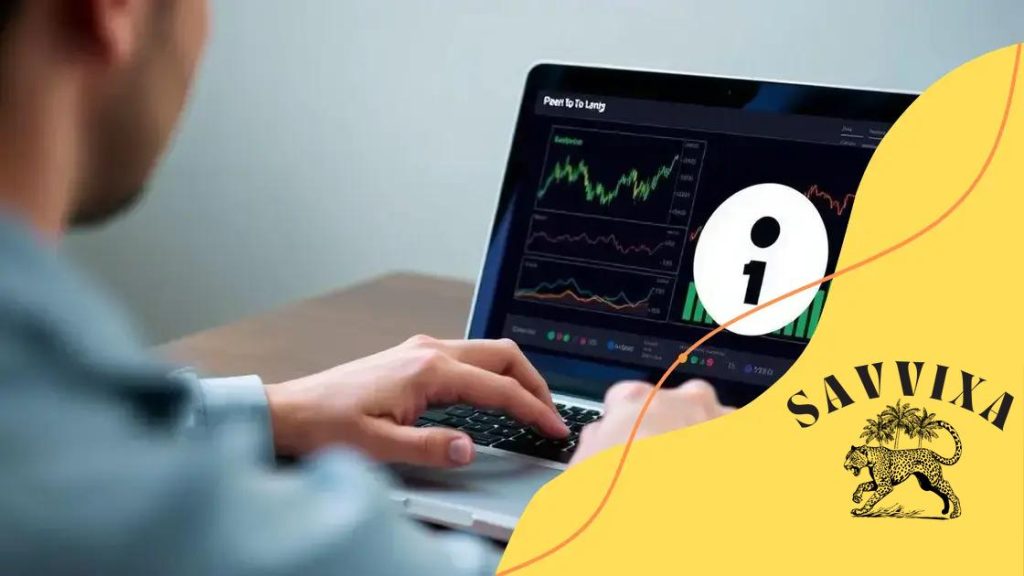The growth of peer-to-peer lending in 2025

The growth of peer-to-peer lending in 2025 will be driven by technological advancements, improved regulations, and increased consumer confidence, providing unique benefits and challenges for both borrowers and investors.
The growth of peer-to-peer lending in 2025 is poised to reshape financial landscapes, offering a fresh take on borrowing and investing. Have you considered how these changes could impact your financial decisions in the near future?
Understanding peer-to-peer lending
Understanding peer-to-peer lending is essential in today’s financial environment. This innovative approach connects borrowers directly to lenders, removing traditional financial institutions from the equation. As a result, both parties can benefit greatly.
How It Works
In peer-to-peer lending, individuals lend money to others through online platforms. Borrowers apply for loans, while investors can browse these applications and choose whom they wish to fund. This system enhances accessibility and often results in lower rates for borrowers.
Key Advantages
- Lower interest rates: Without banks acting as intermediaries, lenders can offer more competitive rates.
- Faster funding: Traditional loan processes can be slow. Peer-to-peer lending platforms typically facilitate quicker approvals.
- Investing opportunities: Individuals can diversify their investment portfolio by funding various loans.
This model thrives on trust and technology, promoting a community-based approach to finance. Borrowers find a range of options suited to their needs, while investors gain transparency into their investments. Additionally, the simplicity of these platforms encourages more people to partake in financial transactions, enhancing overall financial literacy.
As we explore this emerging landscape further, it becomes clear that technology plays a vital role. With user-friendly interfaces and clear information about borrowers’ profiles, investors can make informed decisions about where to allocate their funds.
Challenges to Consider
Although peer-to-peer lending is advantageous, it is not without risks. Investors should be aware that borrowers may default on their loans. Therefore, it’s crucial to assess risk levels before investing. Engaging with platforms that offer risk assessment tools can help mitigate potential losses.
In conclusion, understanding peer-to-peer lending involves recognizing its mechanics, advantages, and challenges. This model has the potential to revolutionize how we think about borrowing and investing, creating more opportunities for everyone involved.
Key benefits for borrowers and investors
Key benefits for borrowers and investors offer critical insights into why peer-to-peer lending is growing in popularity. Both parties in this system gain unique advantages that traditional banking cannot always provide.
Advantages for Borrowers
Borrowers experience several significant benefits when they choose peer-to-peer lending platforms. First and foremost, they can often secure **lower interest rates** compared to traditional loans. This occurs because the middleman, usually a bank, is removed from the transaction.
- Flexibility: Borrowers can customize loan amounts and repayment terms to fit their needs.
- Speed: Online applications can lead to quicker approval processes, allowing access to funds when needed.
- Improved access: Individuals with less-than-perfect credit histories may find it easier to obtain loans through peer-to-peer lending.
These aspects combine to create an attractive option for many looking for financial assistance. The ease of use and transparency of these platforms make them appealing.
Benefits for Investors
Investors also gain remarkable advantages from participating in peer-to-peer lending. They can earn higher returns on their investments compared to traditional savings accounts or bonds. This appeal lies in the potential for attractive interest rates.
- Diversification: Investors can spread their capital across multiple loans, reducing overall risk.
- Direct relationship: With peer-to-peer lending, investors have the opportunity to select borrowers from diverse backgrounds.
- Transparency: Detailed borrower profiles and loan information assist investors in making informed decisions.
By understanding these benefits, both borrowers and investors can navigate the peer-to-peer lending landscape more effectively. As this market continues to evolve, staying informed about these advantages will help individuals maximize their financial opportunities.
Emerging trends in peer-to-peer lending

Emerging trends in peer-to-peer lending highlight the evolution of this financial model as it adapts to modern needs. As technology advances, so do the opportunities and challenges faced by borrowers and investors in the peer-to-peer lending sphere.
Technology Integration
One of the most significant trends is the increased integration of technology. Innovations like artificial intelligence and machine learning are improving risk assessments and borrower evaluations. These advancements allow platforms to offer better rates and more tailored services.
- Data analysis: Platforms are using advanced algorithms to analyze vast amounts of data for risk management.
- User experience: Enhanced interfaces make it easier for users to navigate lending platforms.
- Mobile accessibility: More platforms are developing mobile apps for users to manage their loans and investments on-the-go.
As a result, both lenders and borrowers find it easier to connect and transact securely. This tech-driven landscape fosters trust and transparency, essential for long-term sustainability.
Regulatory Changes
Another key trend is the evolving regulatory environment. Countries are beginning to establish clearer guidelines for peer-to-peer lending, protecting consumers while promoting growth. This shift is vital as the industry matures.
- Compliance measures: Platforms will need to adhere to stricter regulations to ensure the security of investments.
- Increased transparency: Regulations may require platforms to provide more information about loan risks and borrower profiles.
- Consumer protection: New laws may focus on safeguarding borrowers from predatory lending practices.
Improving regulatory frameworks can enhance confidence in peer-to-peer lending. As the industry continues to adapt, stakeholders must remain informed about these changes to make educated decisions.
Potential risks and challenges
Potential risks and challenges associated with peer-to-peer lending are crucial to understand for both borrowers and investors. While this financial model offers many benefits, it also comes with certain drawbacks that can impact participants.
Risks for Borrowers
Borrowers must be aware of the potential risks involved in securing loans through peer-to-peer platforms. One major concern is the possibility of high interest rates, which can arise if the borrower’s credit history is not strong.
- Debt accumulation: If borrowers are not cautious, they can end up accumulating multiple loans from different platforms, leading to financial strain.
- Defaulting on loans: Unable to repay a loan can severely impact one’s credit score.
- Scams: As with any online service, there is a risk of encountering fraudulent platforms that may exploit borrowers.
These factors highlight the necessity for borrowers to conduct thorough research and ensure they clearly understand the terms before committing to any loan.
Challenges for Investors
Similarly, investors face unique risks when participating in peer-to-peer lending. While the potential for high returns is attractive, it is important to acknowledge the possibility of loan defaults.
- Credit risk: Investors may lose their capital if borrowers fail to repay their loans.
- Market fluctuations: Economic changes can affect borrowers’ ability to repay, leading to heightened default rates.
- Lack of liquidity: Unlike stocks, loans are not easy to sell, making it challenging to access funds quickly in emergencies.
Being aware of these risks enables investors to make more informed decisions regarding their portfolios. A diligent approach, combined with a clear understanding of the peer-to-peer lending landscape, helps both borrowers and investors navigate potential pitfalls effectively.
Looking ahead: future of peer-to-peer lending
Looking ahead: the future of peer-to-peer lending is an exciting topic that many are eager to explore. As technology evolves and financial needs shift, the peer-to-peer lending (P2P) landscape will likely undergo significant changes.
Technological Advancements
In the coming years, technology will continue to play a vital role in shaping the future of P2P lending. Artificial intelligence and big data are set to enhance the way platforms assess risks and manage loans. This will lead to better matching between borrowers and lenders.
- Personalized experiences: Leveraging user data will help platforms offer customized loan solutions based on individual needs.
- Improved fraud detection: Advanced algorithms will help identify and mitigate fraudulent activities, protecting both lenders and borrowers.
- Blockchain technology: With increased transparency, blockchain could streamline the lending process, making it more efficient and secure.
These advancements not only enhance borrower experiences but also attract more investors to the market, creating a healthier ecosystem.
Growing Regulation
As peer-to-peer lending becomes more popular, it will likely face increased regulatory scrutiny. Governments around the world are beginning to implement rules to protect consumers and maintain market integrity.
- Stricter compliance standards: Platforms will need to ensure they follow regulations to build trust with users.
- Consumer protection laws: These laws may help safeguard borrowers from unfair lending practices.
- Transparency measures: Increased emphasis on clear and accessible information for potential borrowers and investors will be essential.
Regulation can create a safer environment for all participants, ultimately leading to sustainable growth in the industry.
In the end, the future of peer-to-peer lending is promising, with many opportunities on the horizon. By embracing technology and adapting to regulatory changes, P2P platforms can foster an inclusive financial ecosystem that benefits everyone involved.
FAQ – Frequently Asked Questions about Peer-to-Peer Lending
What is peer-to-peer lending?
Peer-to-peer lending is a method of borrowing and lending money directly between individuals without the involvement of traditional banks.
What are the benefits for borrowers in peer-to-peer lending?
Borrowers can enjoy lower interest rates, faster approval processes, and more flexible loan terms compared to traditional banking options.
What risks should investors be aware of?
Investors should be aware of potential loan defaults, credit risk, and the lack of liquidity, as loans can be hard to sell if they need cash quickly.
How is technology changing peer-to-peer lending?
Advancements in technology, such as artificial intelligence and blockchain, are enhancing risk assessments, improving fraud detection, and making transactions more efficient.